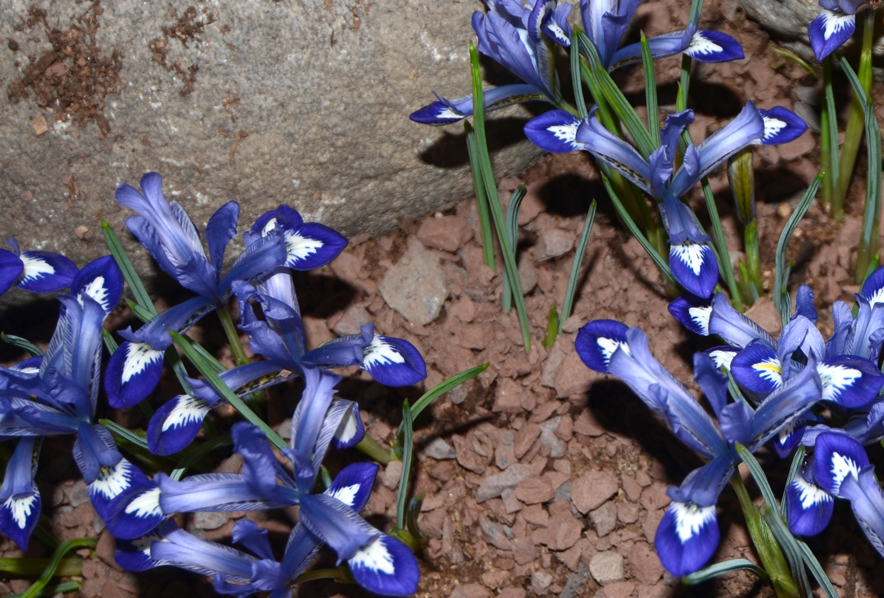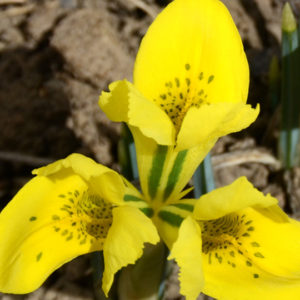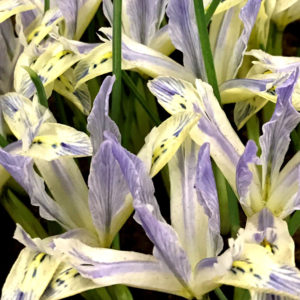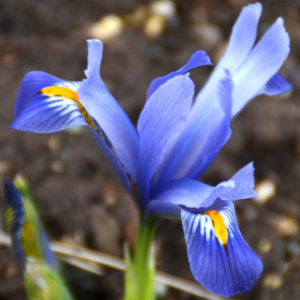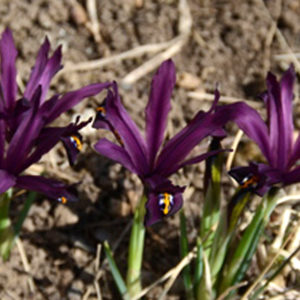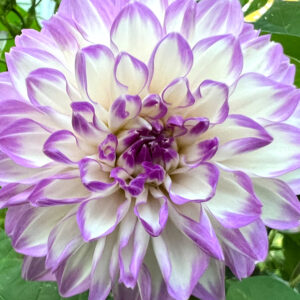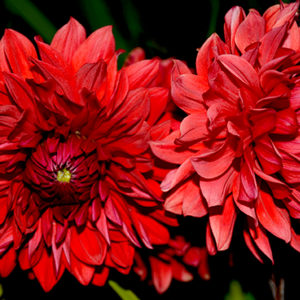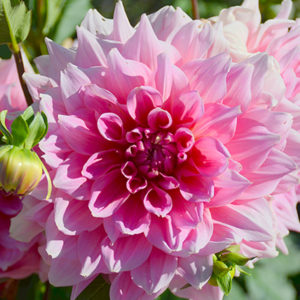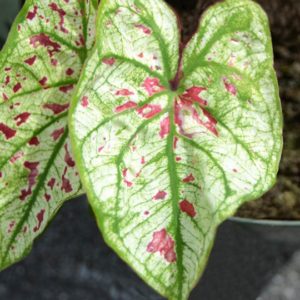Description
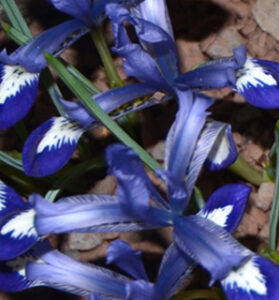 Rock Garden Iris,
Rock Garden Iris,
Reticulata Clairette
Rock Garden Iris are generally smaller, sometimes much smaller, than their Bearded, Siberian or Louisiana cousins. The name, Iris, was given to this species by Theophrastus. Theophrastus (370-287 B.C.), a student of Aristotle, was a scholar, botanist, biologist, and physicist. His two major books constitute the first systemization of the botanical world and were major sources for botanical knowledge during antiquity and the Middle Ages. On the strength of these works some call him the “father of botany.” In Greek, the name means rainbow and given the incredible range of color available in these iris cultivars, the name is quite appropriate.
The first Rock Garden Iris were introduced into Europe in 1596. They are native to Russia, the Caucasus and the northern regions of Iran. They were introduced into the US in 1808.
Rock Garden Iris are important pollinator plants because they bloom so early, and they are deer and critter resistant. Clairette is an extraordinary Rock Garden Iris. The blossoms have sky-blue standards (upper petals) and dark purple-blue falls (lower petals) with large white blotches sprinkled with gold. The overall impact is stunning.
Today, Rock Garden Iris are prized as great plants for pollinators. Because these iris bloom very, very early, they are a favorite of bees and other pollinators in the early spring when little else is available. They are deer and critter resistant. They are also easy to force.
Iris survive in poor soil, drought and windy areas, but they thrive in soil with good drainage and areas of good sunlight. Plant 4-5 inches apart and 2-4 inches deep. Because of their tiny size, it is recommended to plant at least 10 bulbs in a group.
Planting Bulbs in the Fall for Glorious Spring Color
Bulbs are some of the easiest plants to grow. Fundamentally the process requires four steps.
1. Dig a hole.
2. Dust the hole with bone meal.
3. Place the bulb in the hole.
4. Fill the hole with soil.
There are, however, some additional refinements which help produce even more lavish results and enhance protection from critters.
First, bulbs can and should be planted deeper than the instructions you receive on the package labels. An easy way to remember how deep to plant the bulb is to think of a quarter. If the bulb you are planting has the same diameter as a quarter or less, plant the bulb 4 inches deep. If the bulb is broader than a quarter, plant it 6-10 inches deep. Large bulbs like some alliums, camassias, standard tulips and fritillaries can easily be planted 10 inches deep. As the soil compacts days, weeks and months after planting, it produces a thinner layer of soil on top of the bulb. Planting bulbs deep helps with critter control. Moles, voles, chipmunks and squirrels are lazy little creatures, and they don’t like doing a lot of digging to reach their food.
Second, bone meal is a must. It is an excellent source of calcium and phosphorus which help the bulbs to form a strong root system and healthy stems. For large bulbs (those bigger than a quarter), use ¼ cup per bulb. For small bulbs, dust the entire surface or hole where the bulbs will reside.
Third, small bulbs should be planted in clusters of 10 or more – 1 inch apart. Large bulbs, like allium, can stand along, but create a much more pleasing presence in the garden when planted is clusters of 3-5. They should be separated by no more than 4-6 inches.
Fourth, bulbs usually multiply fairly quickly and once crowded will not produce blossoms. Plan to divide your bulbs in mid-summer to fall when the top growth has dried out.
These simple, easy, quick tasks are all that is required to produce a lovely bulb display year after year.
Planting Bulbs in Containers
If you live in Hardiness Zones 5 and higher all you need to do is mix some soil. Check out the soil mix described in detail in our Harvesting History YouTube video. Do not use prepared soil mixes.
The Best Soil Mix for Containers
Always plant bulbs more densely in containers than in the ground. Pots as small as 6-inches in diameter can have a showy presence on a deck, porch or patio. You can use much larger pots and plant several kinds of bulbs.
Fill the pot half full, dust the soil surface with bone meal, arrange the bulbs on top of the bone meal and fill the pot with the rest of the soil. Dust the surface of the soil with more bone meal. Water thoroughly, but do not let the pot stand in a saucer of water.
If you live in Hardiness Zones 1-4, you must protect the pots by bringing them into an unheated garage or surrounding them with bales of straw. If you do not do this, the bulbs usually freeze and turn to mush.

